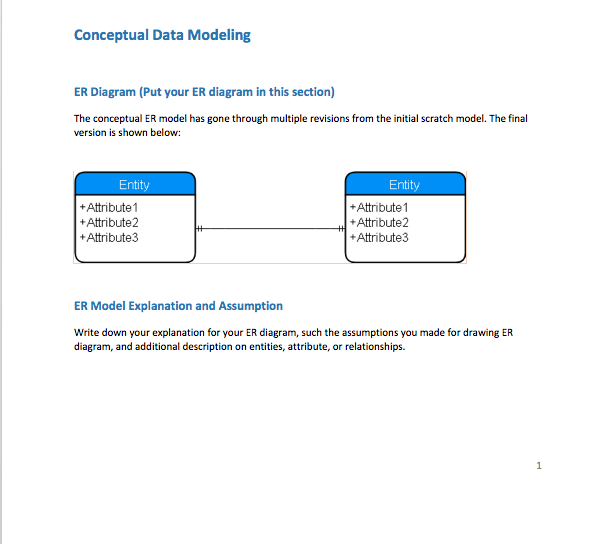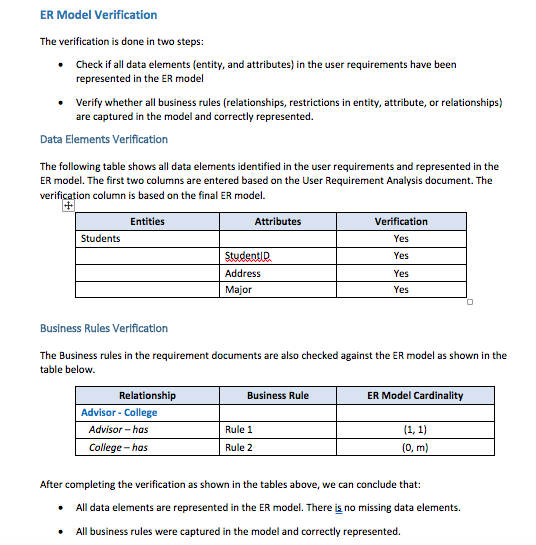Question
Good afternoon, I have a question about my CIS database management class assignment. Below are the questions. And under the quest is how it should
Good afternoon, I have a question about my CIS database management class assignment. Below are the questions. And under the quest is how it should be formatted. Thank you so much!
Create a conceptual ER model for each of the given problems. If there is any ambiguity or missing information in the problem description, you may state your assumptions necessary for creating a complete conceptual ER model. However, your assumptions should neither modify nor contradict the given problems. Unstated assumptions will be regarded as modeling error.
You are required to use Crows FOOT ER modeling notations. You may use Microsoft Visio, Draw.IO (https://www.draw.io/) or other diagramming tool of your preference. Other notations such as Chens ER notation are not accepted.
Problem 1. An Alumni Event Management Database (50%)
The A. M. Robinson School of Business operates international business programs in 10 locations in different countries around the world. The school had its first class of 10,000 graduates in 1970. You are hired by the school to design a database for alumni event management.
The school keeps track of each graduates student number, name, country of birth, current country of citizenship, current name, current address, phone, email address, and the name of each major the student completed. (Each student has one or two majors.)
To maintain strong ties to its alumni, the school holds various events around the world. Events have a description, date, location, and type (e.g., seminar, reception, or dinner). The school needs to keep track of which graduates have attended which events. For an attendance by a graduate at an event, a comment is recorded about information school officials learned from that graduate at that event. School officials have a unique employee ID, name, date of hire, title, and office location.
The school also keeps in contact with graduates by mail, e-mail, telephone, and text messaging. As with events, the school records information learned from the graduate from each of these contacts in addition to the date, time, type of media used, and the school officials initiated the interactions.
When a school official knows that he or she will be meeting or talking to a graduate at an event, a report is produced showing the latest information about that graduate and the information learned during the past two years from that graduate from all contacts and events the graduate attended.
Problem 2 Client Management Database (50%)
Williams and Chordate Security Consultants is a limited partnership. The firm consults with corporations to determine their security needs. You have been hired by the company to design a database management system to help them manage their business. Due to a recent increase in business, the company has decided to automate its client tracking system. You and your team have done a preliminary analysis and come up with the following set of entities, attributes, and business rules:
Consultant
There are two types of consultants: business consultants and technical consultants. Business consultants are contacted by a business first to determine security needs and provide an estimate for the actual services to be performed. Technical consultants perform services according to the specifications developed by the business consultants after service agreements are signed by the client. The date of estimate should also be recorded.
Attributes of business consultant are the following: Employee ID (unique), Name, Address (which is composed of Street, City, State, and Zip Code), Telephone, Date of Birth, Age, Business Experience (which consists of Number of Years, Type of Business [or businesses], and Degrees Received).
Attributes of technical consultant are the following: Employee ID (unique), Name, Address (which is composed of Street, City, State, and Zip Code), Telephone, Date of Birth, Age, Technical Skills, and Degrees Received.
Customer
Customers are businesses that have asked for consulting services. Attributes of customer are Customer ID (unique), Company Name (unique), Address (which is composed of Street, City, State, and Zip Code), Contact Name, Contact Title, Contact Telephone, Business Type, and Number of Employees.
Location
Customers can have multiple locations. Attributes of location are Location ID (which is unique only for each customer), Address (which is composed of Street, City, State, and Zip Code), Telephone, and Building Size.
Service
A security service is performed for a customer at one or more locations. Before services are performed, an estimate is prepared as described earlier. Attributes of service are Service ID (identifier), Description, Cost, Coverage, and Clearance Required.
Additional Business Rules
In addition to the entities outlined previously, the following information will need to be stored the database and should be shown in the model. These may be entities, but they also reflect a relationship between more than one entity:
Estimates, which have characteristics of Date, Amount, Business Consultant, Services, and Customer
Services Performed, which have characteristics of Date, Amount, Technical Consultant, Services, and Customer
To construct the EER diagram, you may assume the following:
A customer can have many consultants providing many services. You wish to track both actual services performed as well as services offered. Therefore, there should be two relationships between customer, service, and consultant, one to show services performed and one to show services offered as part of the estimate.
Assignment Deliverables and Assessment
The assignment report should include the ER model for each problem and additional assumptions you made. Your report to each problem should include:
Analysis of the requirements to determine the scope of the database in terms of data elements and relationships (reflected in your ER diagram)
The assumptions you made and their justification (in your report and ER diagram)
The conceptual ER model diagram showing all required details (in ER diagram)
Verification of the model to show it is correct and complete (in your report).
You may reference to the report example (available in Assignments folder on iCollege) when you prepare your assignment report.
The ER model is assessed based on the following criteria.
| Criteria | Explanation | Weight |
| Modeling correctness | Correctly represent the user requirements and business rules | 50% |
| Modeling completeness | Completely captured all data elements, relationships, and business rules | 25% |
| Notation correctness | Correctly use of modeling notations | 15% |
| Report organization | Well organized, readable, free of writing errors | 10% |
Example format of how answered should be below


Step by Step Solution
There are 3 Steps involved in it
Step: 1

Get Instant Access to Expert-Tailored Solutions
See step-by-step solutions with expert insights and AI powered tools for academic success
Step: 2

Step: 3

Ace Your Homework with AI
Get the answers you need in no time with our AI-driven, step-by-step assistance
Get Started


